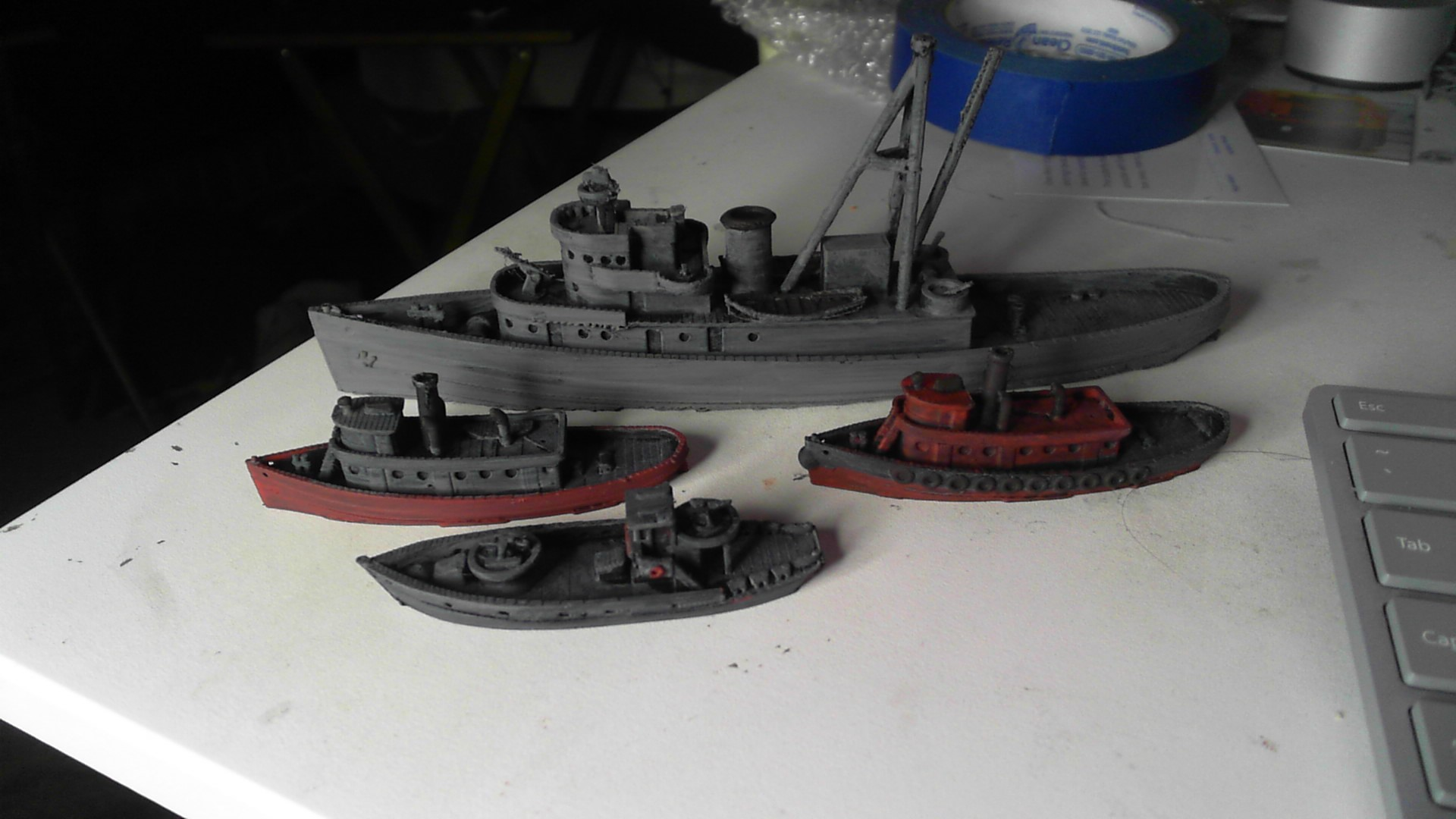Fleet Combat Tug (after the Navajo/Cherokee class)
Fleet Combat Tug (after the Navajo/Cherokee class)
Fleet tugs were used to aid disabled ships, usually by towing, on the high seas or in combat or post-combat areas, plus "other duties as assigned." USS Tawasa is an example and inspired this sculpt. She served in the Pacific Ocean and had a very successful career marked by the winning of three battle stars during World War II, two during the Korean War, and seven campaign stars during the Vietnam crisis. She was a member of the Cherokee Class, originally known as the Navajo class. They were first built for the United States Navy prior to the start of World War II and were a radical departure from previous ocean-going tug designs, being far more capable of extended open ocean travel. This was due in large part to their 205 feet (62 m) length, 38 feet (12 m) beam, and substantial fuel-carrying capacity. They were also the first large surface vessels in the United States Navy to be equipped with Diesel-electric drive.The first three vessels, Navajo, Seminole and Cherokee, were constructed from 1938 to 1940 at the Staten Island Shipyard division of Bethlehem Steel Corporation. Navajo and Seminole joined the Pacific fleet in 1940, and Cherokee went to the Atlantic fleet. Navajo was en route to San Diego from Pearl Harbor on 7 December 1941, and immediately reversed course to Pearl Harbor once news broke of the Japanese attack. She became a critical element of salvage operations there, as did her sister ship Seminole, in the days following the attack.Following the loss during World War II of the first two ships of the class, Navajo and Seminole, the class was renamed from its original pre-war name of Navajo class to Cherokee class, the name of the third ship laid in 1939, which still survived.
Our 1/300th (6MM) scale model is 205x38MM and is produced with FDM 3D printing
Our 1/600th (3MM) scale model is 102x19mm and produced as an all SLA model
This model features 3D printed parts: There are two types of 3D printed parts we use in our products. "FDM" is lower cost, and is what most would recognize as traditional 3D printing. This type of model printed in layers from thermal plastic (generally PLA or PETG), and is lightweight with reasonable detail but will have visible striation (or lines) that the hobbyist may want to clean up using putty, primer, or other hobby techniques. "SLA" is a laser cured photo-resin that has exceptional detail, and generally has a much smoother finish without significantly noticeable striation. This type of material is more expensive, and fine details can be more delicate.
Some models may use either or both types of parts, and some models may have the ability for the buyer to select the print type under print options. These models are intended to be painted and may come in different colors.










